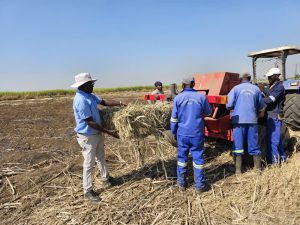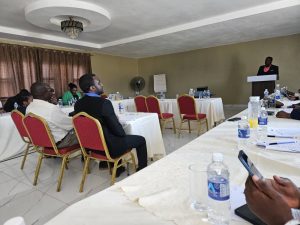Moses Ziyambi
An irrigation scheme which stopped working 14 years ago and which was resuscitated with support from Southern Alliance for Indigenous Resources (SAFIRE) in partnership with Oxfam, University of Zimbabwe (UZ) and the Swedish Meteorological Hydrological Services (SMHI) has weaned many villages off their dependence on food aid.
Resuscitation of the Mutunha Irrigation Scheme in Ward 15 was funded by Swedish development aid partner SIDA under the broader Climate Adaptation for Rural Livelihoods (CARL) programme which seeks to improve the socio-economic well-being of Zimbabwe’s rural population by reducing poverty and food insecurity in the face of climate change.
The farmers have already produced 35 tons of sugar beans, 45.6 tons of maize, 18.5 tons of wheat over three seasons, with a total of US$45200 being raised from sales of beans alone.
The district is especially vulnerable because the livelihoods of the majority of the population are premised upon rain-fed agriculture.
The project supported installation of a solar-powered pumping system which supplies 18.5 hectares of land cultivated by a total of 37 farmers. .
Before the intervention, farmers had resorted to dryland cropping, selling wild fruit, informal trading, donor food aid dependance, village savings and environmentally unfriendly activities including stream bank cultivation.
Chairperson of the scheme, Joab Mutunha said the project was a model clean energy irrigation system which contributed to the reduction of food insecurity, malnutrition and poverty.
“It is good to be able to produce our own food and we do not rely on donations anymore. We employ security guards whom we pay from the proceeds of our sales. We agreed that each farmer contributes US$60 in cash or the equivalent in value of produce so that we can remunerate the guards fairly,” said Mutunha.
SAFIRE team leader of Agriculture and Livelihoods, Estella Toperesu said the project was critical for building grassroots resilience as part of efforts to fight climate change in the largely semi-arid Buhera district.
“We are pleased that both plot holders and the community at large now have increased access to such food varieties as cereals, legumes and vegetables. The project facilitated organizational and technical skills enhancement, input and output market linkages, effective collaboration mechanisms with relevant government departments and the establishment of a maintenance facility.
She said there was need for combined efforts by community and relevant government authorities to address issues exacerbating land degradation upstream, notably stream bank cultivation that is contributing to siltation of Mutunha Dam.






